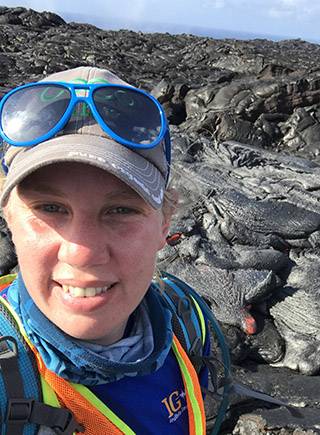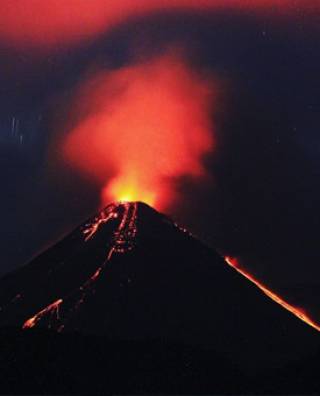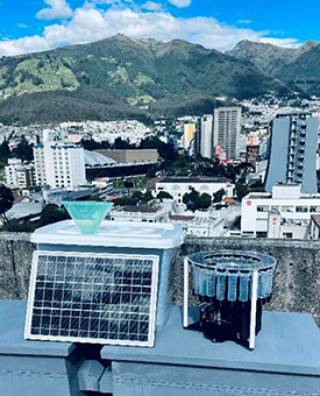Physical volcanology, experimental rock physics, volcano monitoring, eruption forecasting, volcano monitoring equipment development
NERC Research Fellow in Volcanology

Appointment: | Room: |
|---|---|
| NERC Research Fellow | K. Lonsdale Building, G02 |
Courses Taught: | |
| Contributor to MSc Geophysical hazards field course | |
Research Group(s): | |
| Natural & Environmental Hazards | |
| UCL Hazard Centre | |
| Rock & Ice Physics Laboratory | |
Email Address: | Telephone Number: |
| e.gaunt@ucl.ac.uk | |
Research Summary
My research aims are to investigate the dynamics of volcanic eruptions by studying the fundamental mechanics and physical properties of geological materials. More specifically, my research is directed towards understanding magma degassing processes and pre-eruption conduit conditions to investigate explosive effusive eruption transitions and the factors that lead to the triggering of large Vulcanian events. I have a unique background combining experimental rock physics with physical volcanology, including 8 years of volcano monitoring and field experience at an active volcano observatory in Ecuador.
I manage the Experimental Volcanology laboratory at UCL which houses a high temperature triaxial deformation and permeameter apparatus. The apparatus is capable of simulating the conditions and processes prevalent in shallow volcanic environments (temperatures up to 1000°C, confining pressures up to 70 MPa and pore fluid pressures up to 60 MPa). Here we employ an experimental approach to simulate different fluid flow and deformation processes occurring within the magma and conduit and, the geophysical signals produced by these processes to generate new inputs for eruption forecasting models.
Current Research Topics:
- The explosivity of volcanic eruptions: Quantifying the critical role of permeability in magmas.

Within this research project, high temperature rock physics experiments to acquire permeability data simultaneously with acoustic emissions (a laboratory analogue for natural seismicity) under simulated volcanic conditions. The experimental data will be integrated with geophysical monitoring data from a number of example eruptions to identify and quantify outgassing processes occurring in the conduit. The main aim is to identify key processes that control the movement of fluids in magmas and the characteristic seismic signals produced by these processes. These unique experimental data will be used to link the processes dictating permeability evolution to the explosive potential of volcanic systems and more accurately define the different source processes of LF seismicity, underpinning a new generation of models to forecast the state of the volcanic systems and potential explosivity of future eruptive activity.
- AACE-IG: a new automated, remote controlled volcanic ash monitoring and collection system.

 Close
Close

